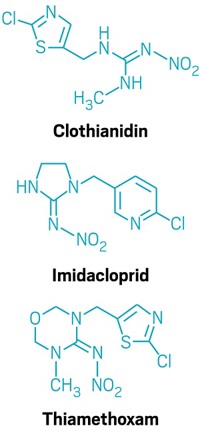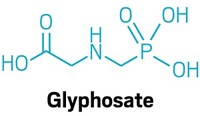Advertisement
Grab your lab coat. Let's get started
Welcome!
Welcome!
Create an account below to get 6 C&EN articles per month, receive newsletters and more - all free.
It seems this is your first time logging in online. Please enter the following information to continue.
As an ACS member you automatically get access to this site. All we need is few more details to create your reading experience.
Not you? Sign in with a different account.
Not you? Sign in with a different account.
ERROR 1
ERROR 1
ERROR 2
ERROR 2
ERROR 2
ERROR 2
ERROR 2
Password and Confirm password must match.
If you have an ACS member number, please enter it here so we can link this account to your membership. (optional)
ERROR 2
ACS values your privacy. By submitting your information, you are gaining access to C&EN and subscribing to our weekly newsletter. We use the information you provide to make your reading experience better, and we will never sell your data to third party members.
Pesticides
Neonicotinoids likely to adversely impact endangered species
US EPA draft evaluations raise questions about future of the widely used insecticides
by Britt E. Erickson
August 27, 2021

Three neonicotinoid pesticides—clothianidin, imidacloprid and thiamethoxam—are each likely to adversely affect more than 1,000 endangered plants and animals, according to draft evaluations released Aug. 26 by the US Environmental Protection Agency. Grower organizations dispute the conclusions, claiming that the EPA overestimated the amounts of the pesticides that farmers use.
Neonicotinoid pesticides are widely used to control insects on numerous crops and in residential areas. The chemicals are less toxic to vertebrates than many older insecticides, but they have been heavily scrutinized for their potential negative effects on pollinators such as bees.
The EPA is required to evaluate the potential effects of pesticides on endangered species when it registers a new pesticide or reregisters an existing pesticide. But the agency has failed to keep up with its obligations, resulting in numerous lawsuits from environmental groups. The EPA evaluated the impacts of the three neonicotinoids on endangered species as part of a legal settlement.
In January 2020, the EPA said it would allow the chemicals to stay on the market while it addressed their impacts on endangered species. At the time, the agency suggested new restrictions to protect pollinators and additional personal protective equipment for farmworkers who are exposed to neonicotinoids. If the EPA concludes in its final evaluations that the pesticides are likely to adversely impact any endangered species, the agency must then consult with the Fish and Wildlife Service and the National Marine Fisheries Service to determine whether any endangered species are in jeopardy from use of the chemicals and to develop measures to protect them.
Environmental groups are pressuring the EPA to follow the European Commission’s lead and ban neonicotinoids. Outdoor use of clothianidin, imidacloprid and thiamethoxam is prohibited in the European Union, although some use continues there under emergency exemptions.
“The EPA doesn’t need any more proof. It should ban neonicotinoids right now,” Lori Ann Burd, environmental health director at the Center for Biological Diversity, says in a statement. “We’re in a heartbreaking extinction crisis, and neonicotinoids are playing an outsized role in driving it. Pollinator populations are declining nationwide,” she says.
Farm groups representing major crops such as soybeans and cotton are criticizing the EPA for ignoring real-world data in its evaluations. “Farmers are judicious in their use of pesticides,” Zippy Duvall, president of the American Farm Bureau Federation, says in a statement. “EPA overstates the quantities used and therefore overestimates the impact on species,” he says. Farmers are worried that they will need to rely on more expensive and less effective pesticides if the EPA prohibits the use of neonicotinoids.
The EPA is accepting comments on the three evaluations until Oct. 25.





Join the conversation
Contact the reporter
Submit a Letter to the Editor for publication
Engage with us on Twitter